
REVIEW – The further I travel from civilization on my solo Overlanding adventures, the more I realize the importance of staying connected. It turns out though, remote places with beautiful scenic views often don’t get reliable cell service. Luckily, I was offered the chance to review a cell signal booster specifically designed for the Offroading/Overlanding crowd. The Bolton Velocity Off-Road Vehicle Cellular Signal Booster has the same “brain” as Bolton’s other boosters, but adds a beefed up antenna and mounting options. Priced at $549.99 the Bolton unit is right in line with its main competitor, weBoost, and offers similar functionality along with outstanding performance in the field.
What is it?
The Bolton Velocity Off-Road Vehicle Cellular Signal Booster is a device that improves cell signal strength in a vehicle traveling through areas with weak reception. The Bolton’s external antenna captures a weak signal, the Velocity unit boosts the signal, and a small internal antenna broadcasts the stronger signal inside the vehicle. The off-road version of the Bolton, which I tested, features a larger antenna specifically designed for mounting on roof racks commonly found on off-road vehicles. It’s important to note that cellular signal boosters can only amplify existing cell signals and cannot create new ones. So, in areas with no cell signal at all, a booster won’t be effective.
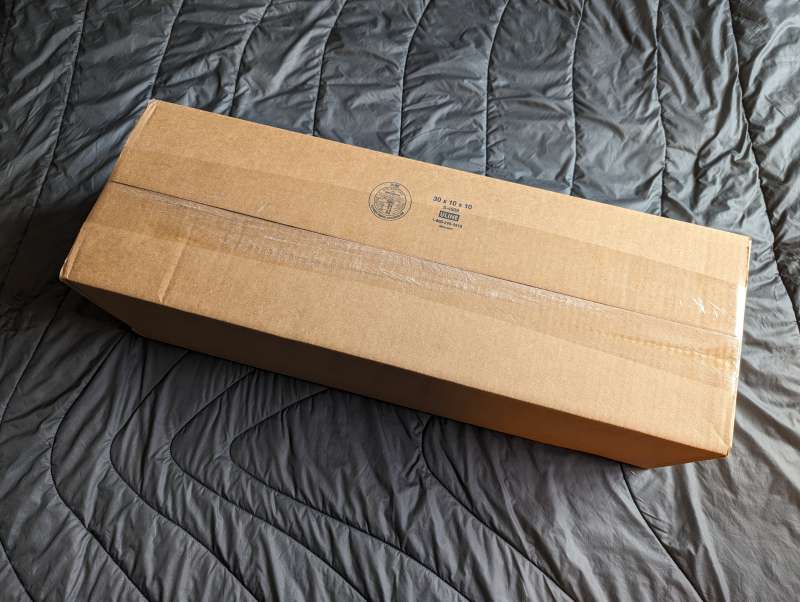
The Bolton ships in a large, plain cardboard box containing both the Bolton Blade Antenna with off-road mounts and the Velocity Signal Booster. Bolton also sends along a yo-yo for some reason, which was a nice treat.
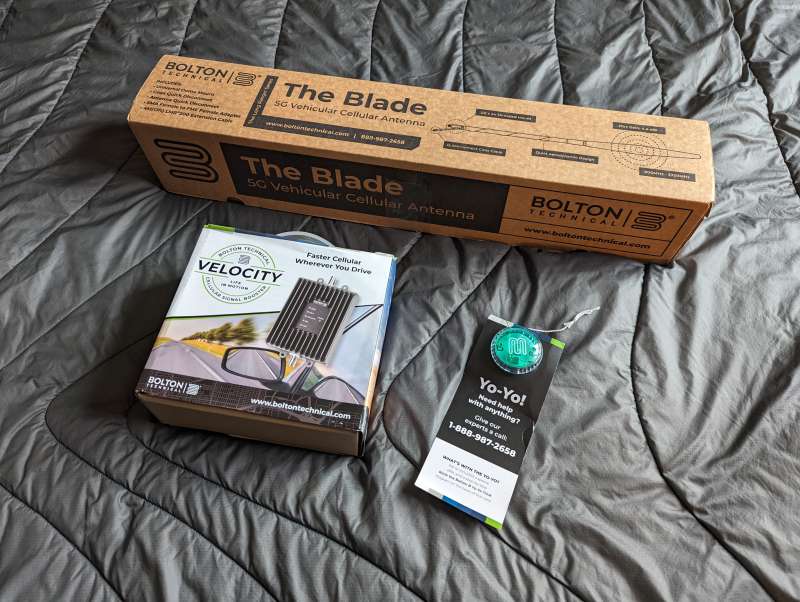
What’s in the box?
- Bolton Velocity Signal Booster
- Blade Antenna
- Antenna coaxial cable (13ft.)
- Antenna Adapter FME-Female to SMA-Female
- Inside B-Flat Antenna (10ft.)
- RAM Track Ball with T-Bolt attachment
- Kewig Bar Clamp Mount
- Antenna Quick Disconnect
- Accessory Mounting Pack
- 12V DC Power Supply
- User Manual
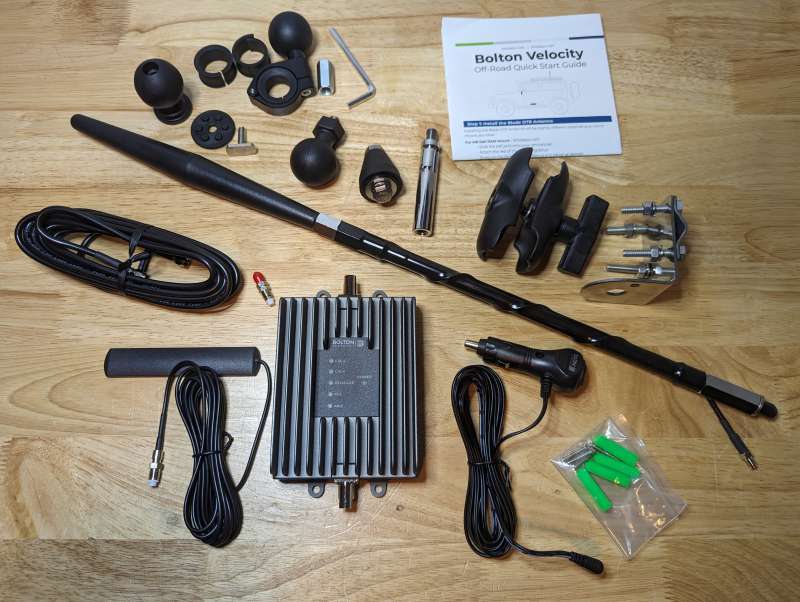
Hardware specs
- Uplink (MHz)
- 698-716
- 776-787
- 824-849
- 1710-1755
- 1850-1915
- Downlink (MHz)
- 728-746
- 746-757
- 869-894
- 1930-1995
- 2110-2155
- Input/Output Impedance: 50 Ohm
- Maximum Gain: 50 dB
- Max Uplink Power: 29 dBm
- Noise Figure: ≤5 dB
- VSWR: ≤2.0
- Gain Adjustment: 20 dB (Automatic)
- Maximum Output Power: 1 Watt EIRP
- Cable Type Outside: RG-58U
- Cable Type Inside: SC-174
- RF Connectors: FME male (both ends)
- Power Consumption: <10W
- Dimensions: 5.625″ x 4″ x 1.125″
- Weight: 1.43 lbs
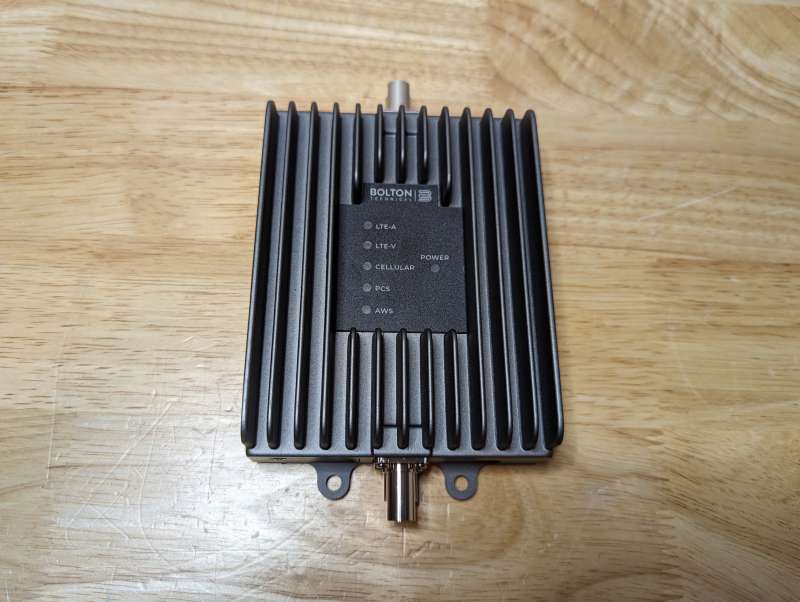
Design and features
The Bolton Velocity Off-Road Vehicle Cellular Signal Booster is the core of the entire kit, designed to be sturdy and sleek with a high-tech aesthetic. The body features a full metallic construction, with large cooling fins running along the top of the unit.
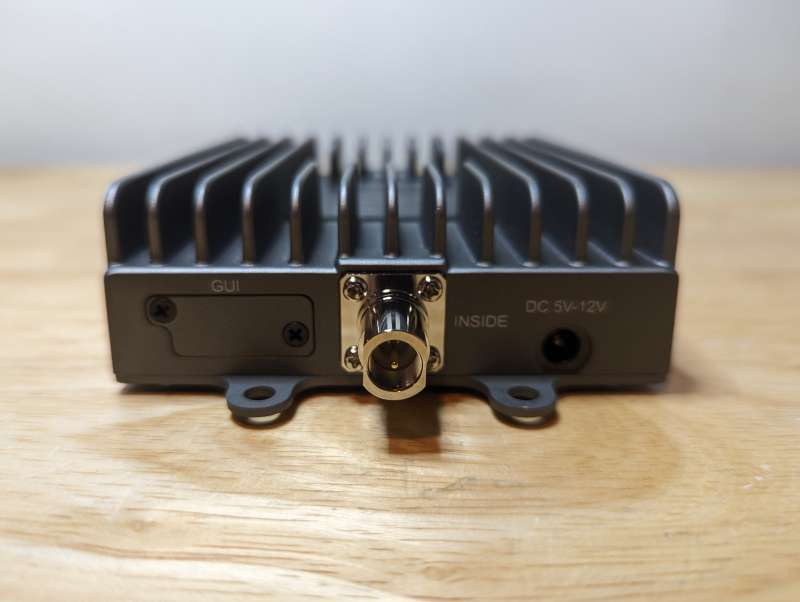
On one side of the Velocity is an antenna connection for the interior antenna, along with a DC power port.
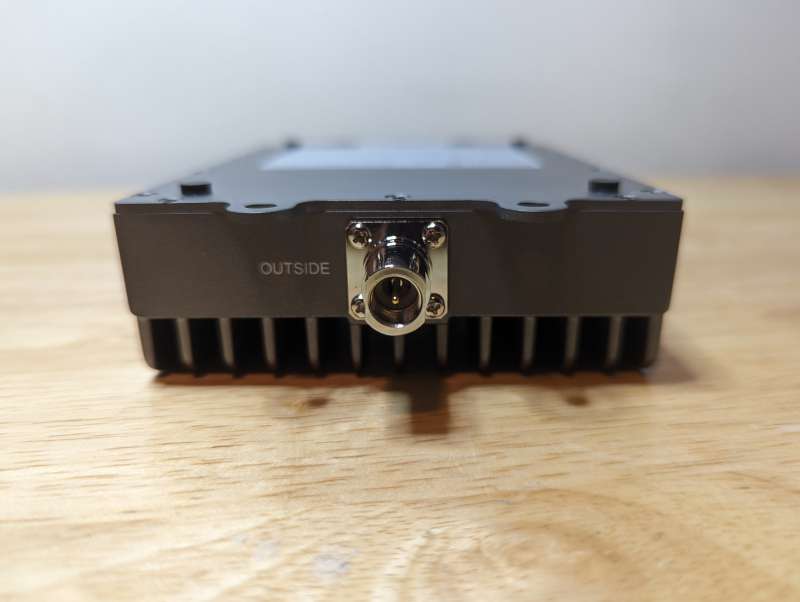
The other side of the Velocity features an antenna connection for the exterior antenna.
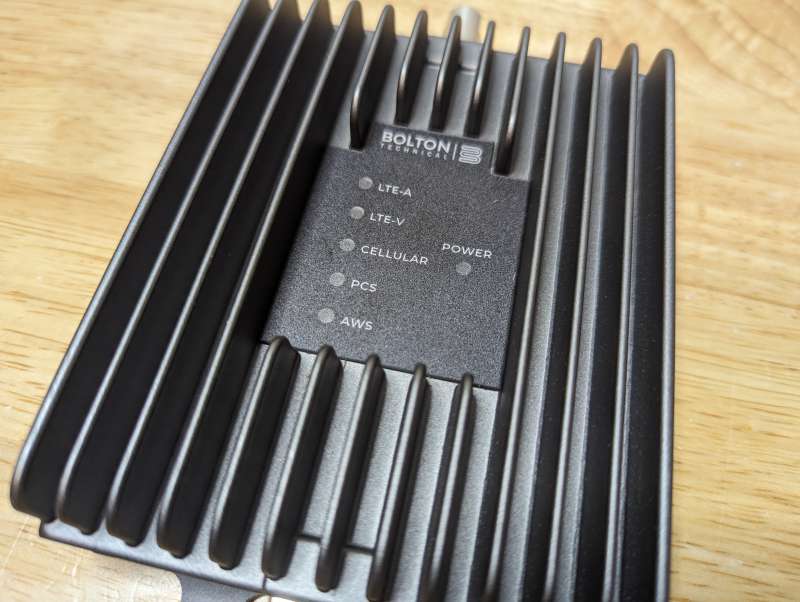
Along with the cooling fins, the top of the Velocity has six labeled LEDs that indicate connection status and power state. To understand the LED color indicators, solid green means normal operation, flashing green indicates that Automatic Gain Control (AGC) is self-adjusting due to over-signal or antenna proximity, and flashing red indicates issues caused by overpowering or oscillation requiring an adjustment of the exterior antenna.
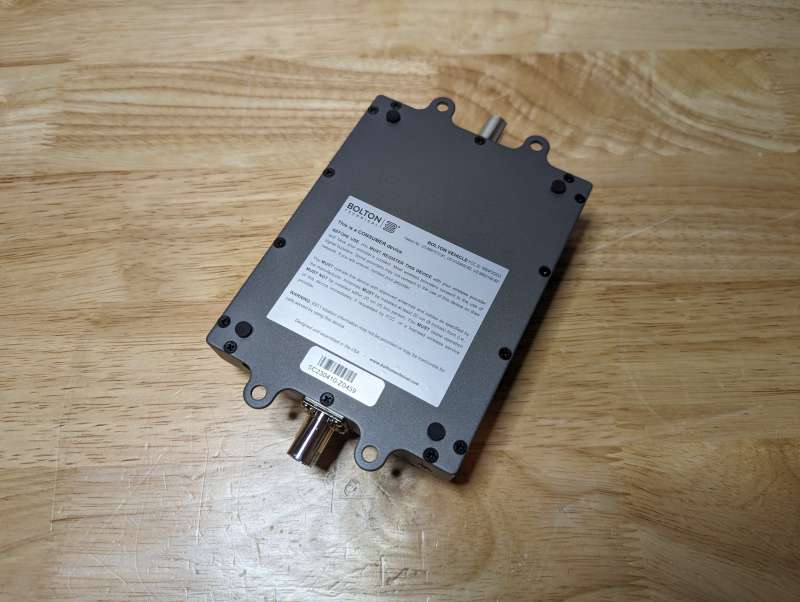
The underside of the Velocity features warnings about registering the device with your cell service provider as well as proper antenna placement. It also features four mounting points for securing the Velocity within a vehicle.
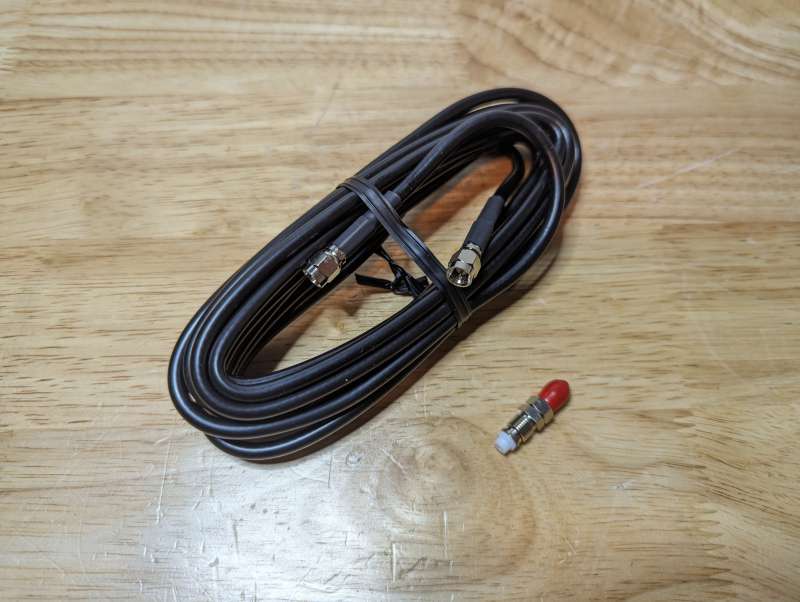
The Bolton Off-Road kit includes a 13-foot-length of exterior coaxial antenna cable, along with an FME-Female to SMA-Female adaptor for connecting it to the Velocity Signal Booster.
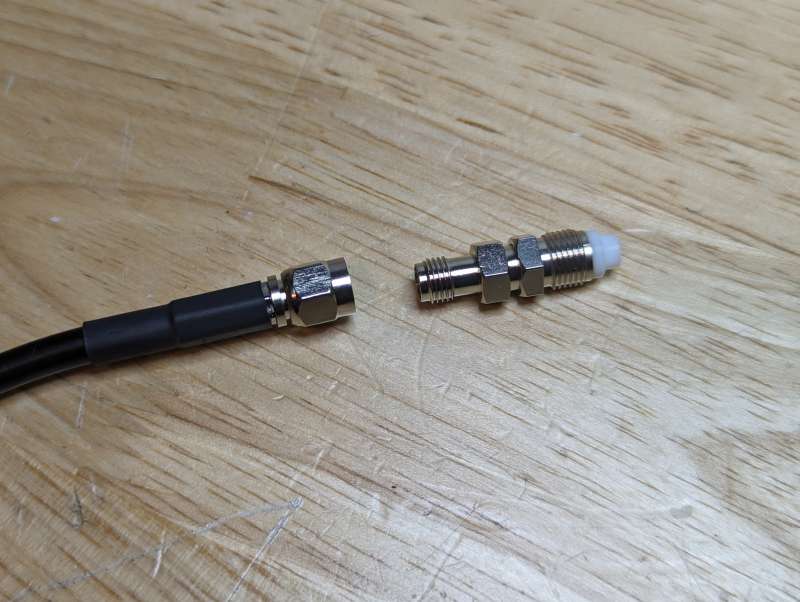
The adaptor fits securely on one end of the coaxial cable, while the other end of the cable attaches directly to the antenna.
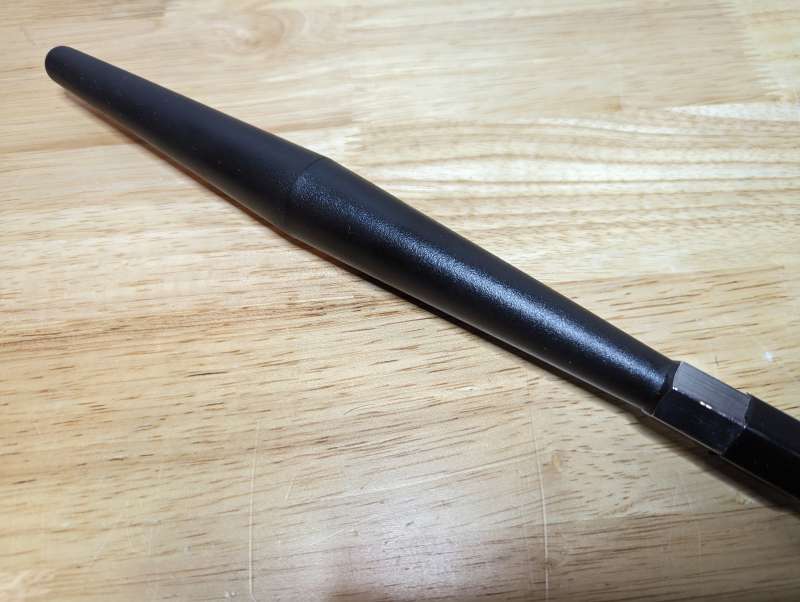
The Blade antenna has a durable fiberglass exterior and a unique shape designed to reduce wind noise and whistling.
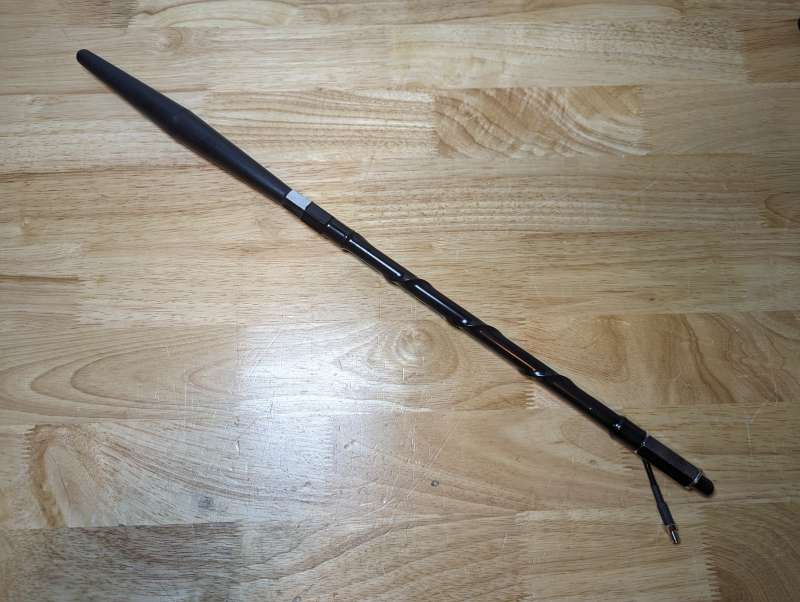
The entire two-foot length of the Blade antenna is coated in rubber and terminates at a 3/8 x 24 threaded base for mounting, along with a coaxial female connector.
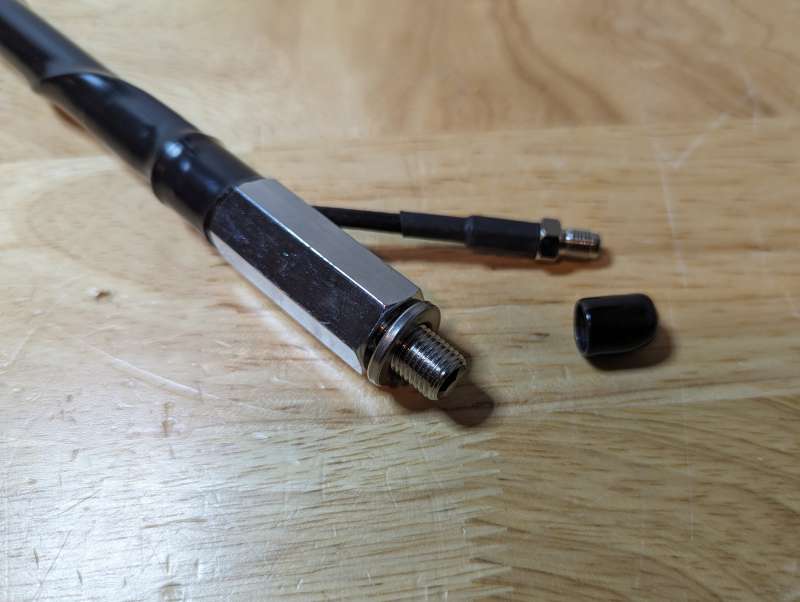
The threaded base ships with a rubber cover on it to prevent the washer from falling off.
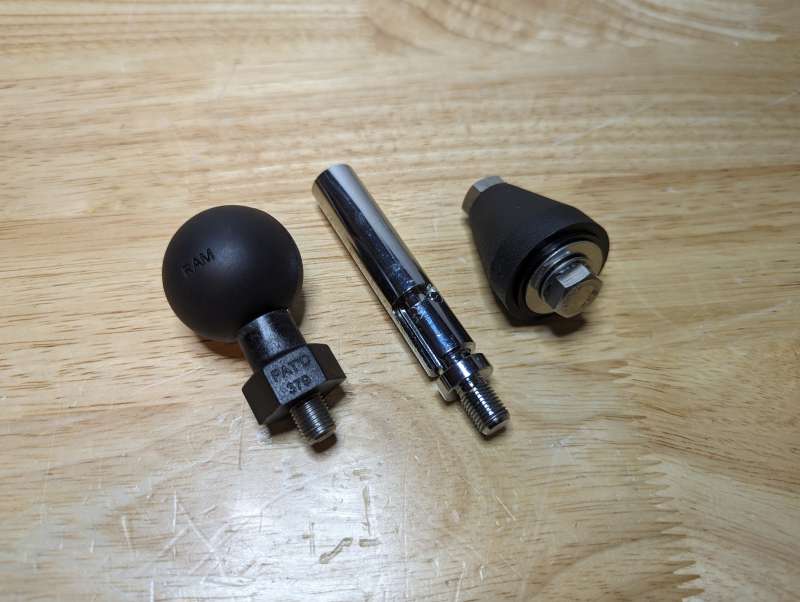
The most important part of the Blade’s mount is the “Push and Twist” Quick Disconnect and the RAM Tough-Ball mount.
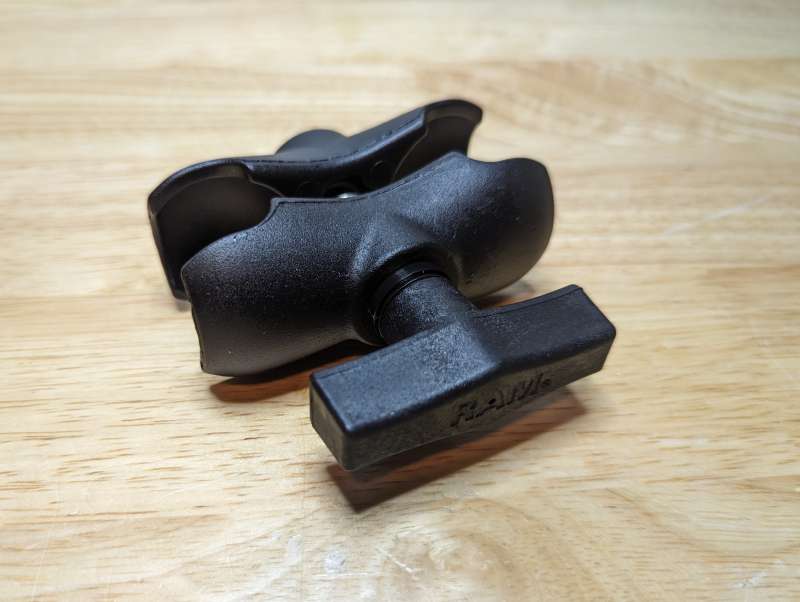
The Tough-Ball mount connects to the antenna base, linking it to one side of the RAM Double Socket Arm.

If you opt for the Kewig Bar Clamp Mount, the clamp securely fits around any rounded bar-like mounting point, while the ball locks into the other side of the RAM Double Socket Arm.
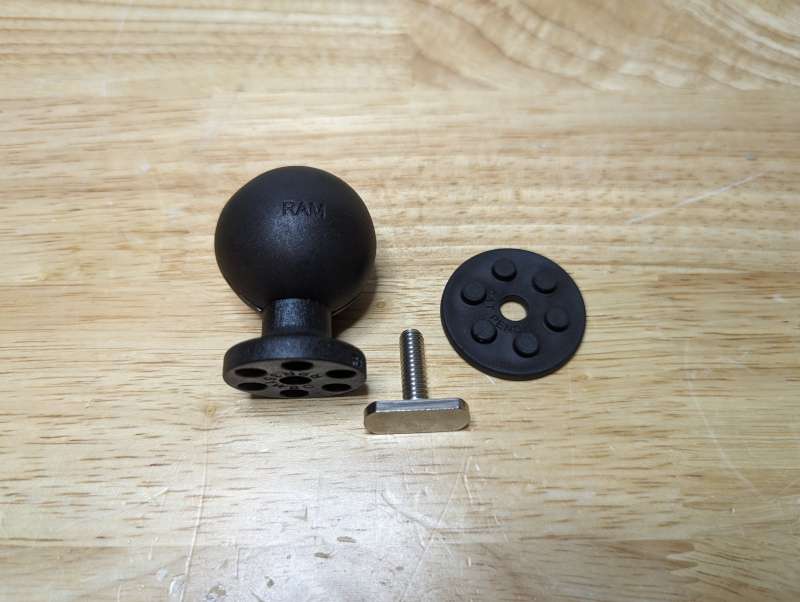
If you go with the RAM Track Ball with the T-Bolt attachment, the T-Bolt drops into your mounting track, while the ball also locks into the Double Socket Arm.
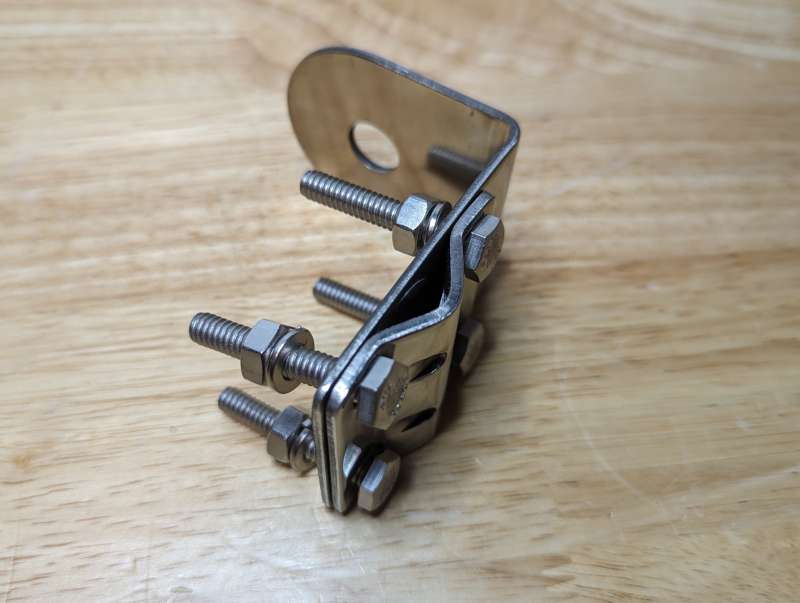
The Bolton Velocity Off-Road Vehicle Cellular Signal Booster also ships with a standard L-Shaped bracket with four bolts for securing to other types of mounting locations.
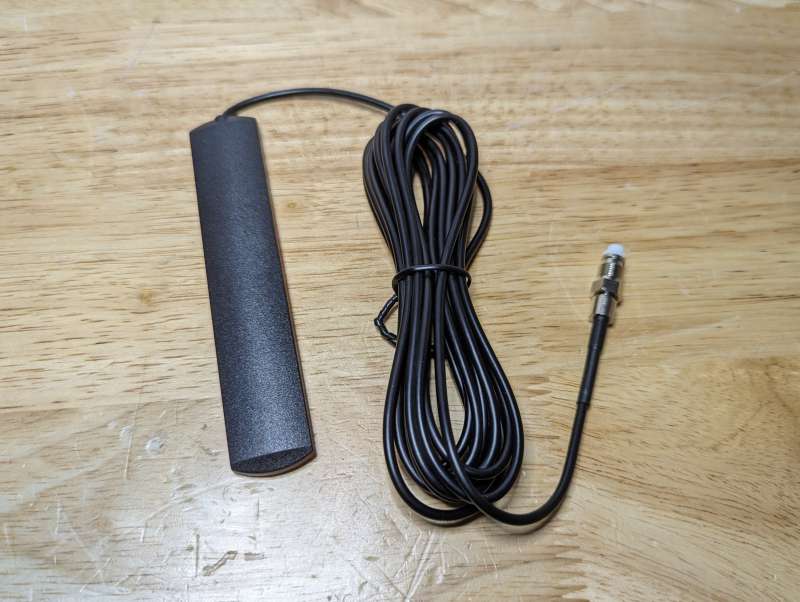
The flat interior antenna comes with ten feet of coaxial cable and a 3M adhesive strip for mounting.
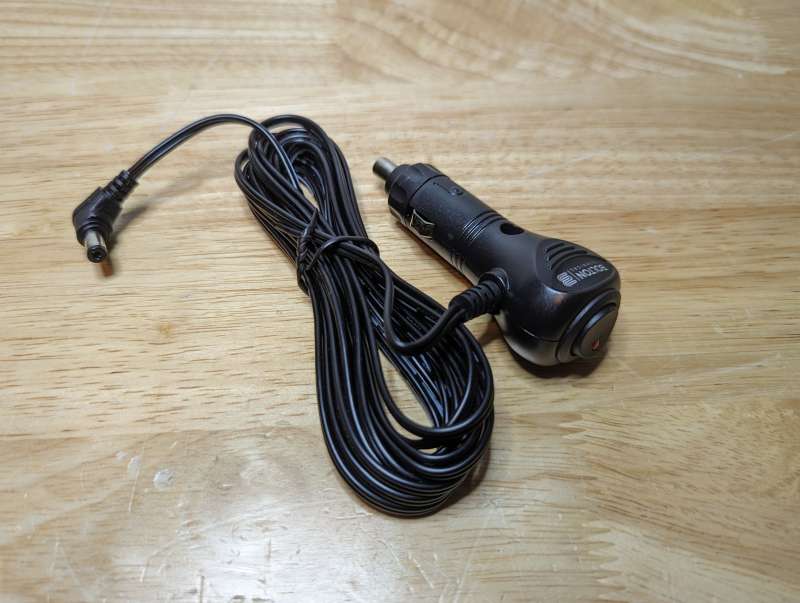
To power the Bolton Velocity, there’s a 12V DC cable with an on/off switch included in the kit.
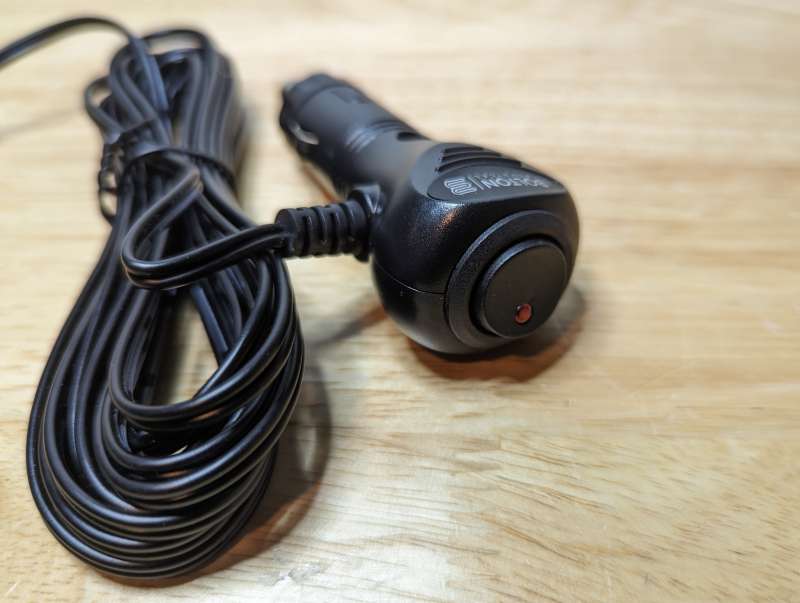
If you don’t want to use the 12V DC cable, Bolton also offers a hardwiring kit for sale on their website. This is disappointing because for $549.99 I feel like the hardwiring kit should be included, especially since it’s just the same cable as is included without the cigarette lighter attachment.
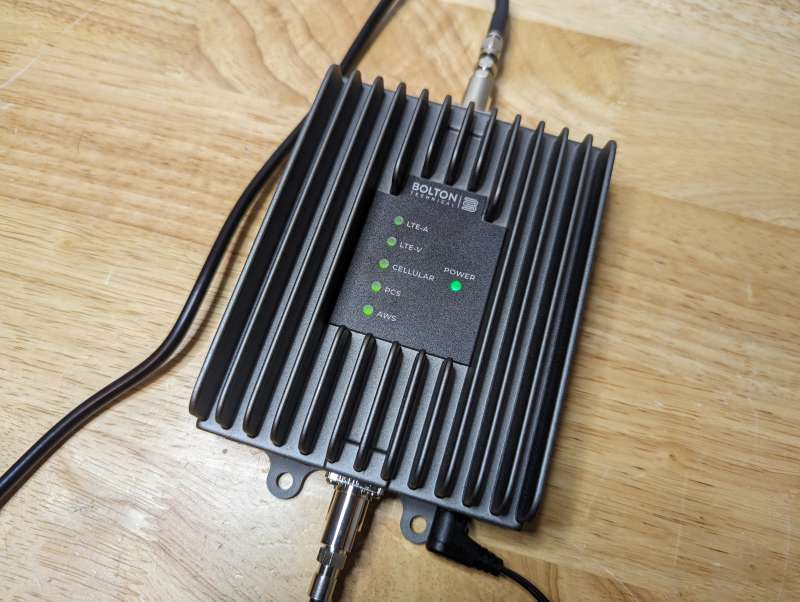
Setup
Since the Bolton Velocity Off-Road Vehicle Cellular Signal Booster is a true plug-and-play device, setup primarily involves installing the unit and antennas in your vehicle.
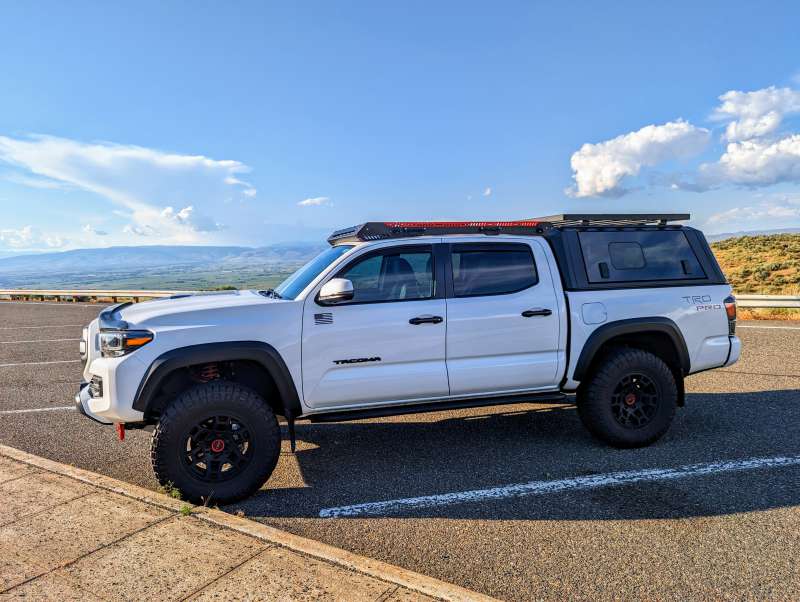
I installed the Bolton in my 2022 Tacoma TRD Pro and used the RAM Track Ball with the T-Bolt mount to secure the exterior antenna to my front roof rack.
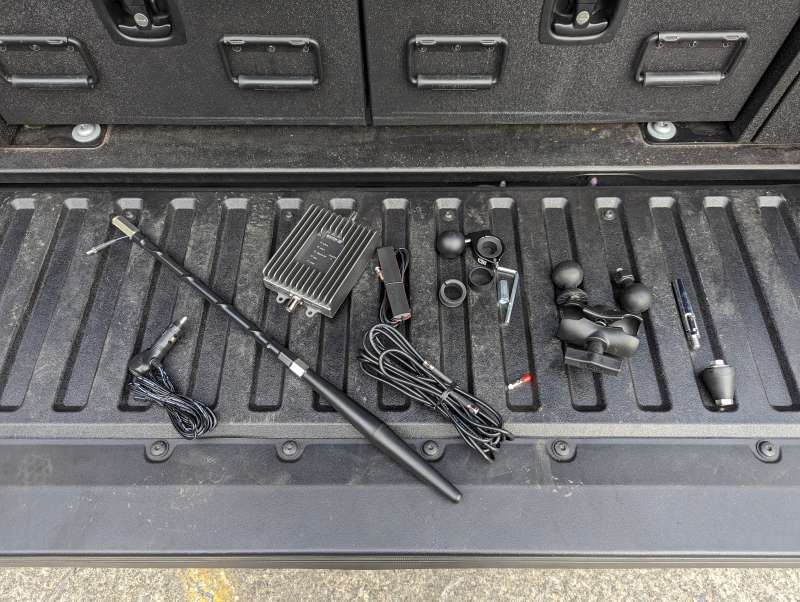
The installation itself isn’t overly complicated, but it can be a bit tedious due to the cable routing.
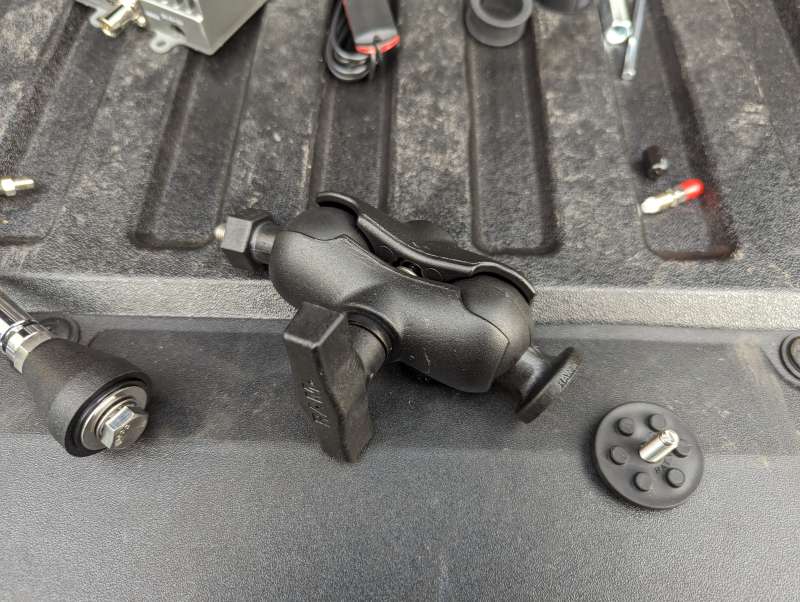
The first step was to assemble the exterior antenna mount using the RAM Double Socket Arm to hold the Tough-Ball mount on one end and the Track-Ball on the other.
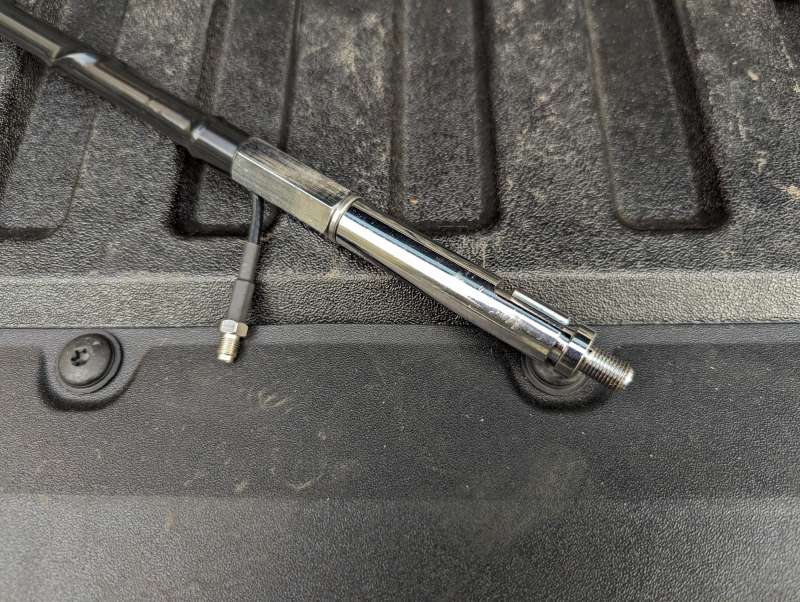
Next, I removed the protective cap from the Blade antenna and threaded on the Quick Disconnect piece.
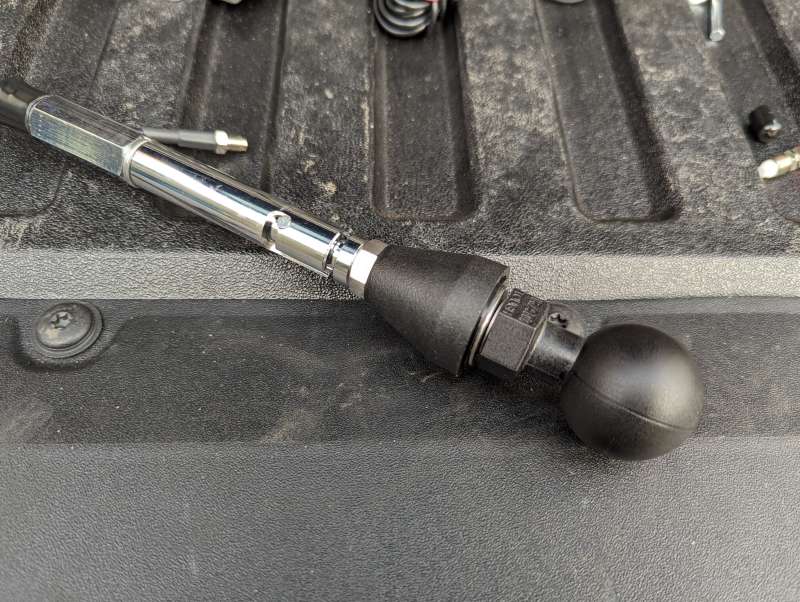
To make sure everything would be secure once it was mounted I threaded on the antenna base and Tough-Ball as well.
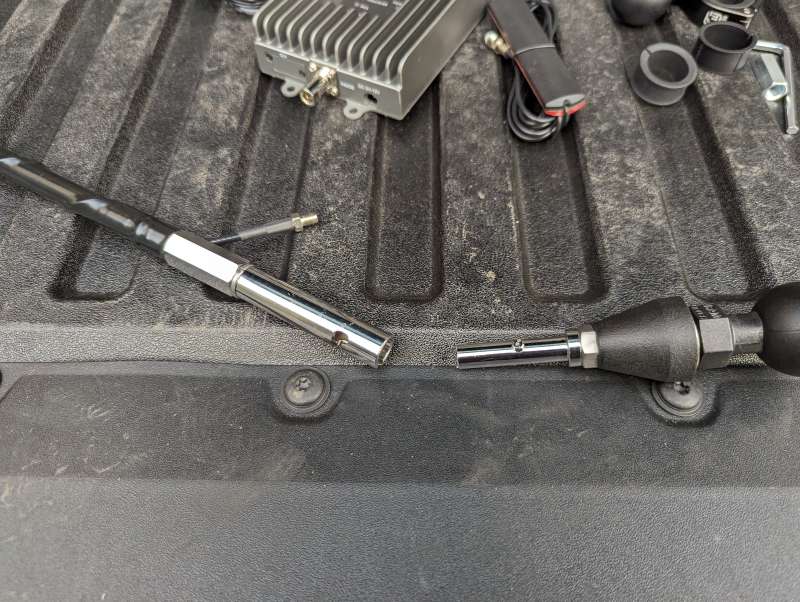
I then removed the antenna from the assembled base using the Quick Disconnect to make installation a bit easier.
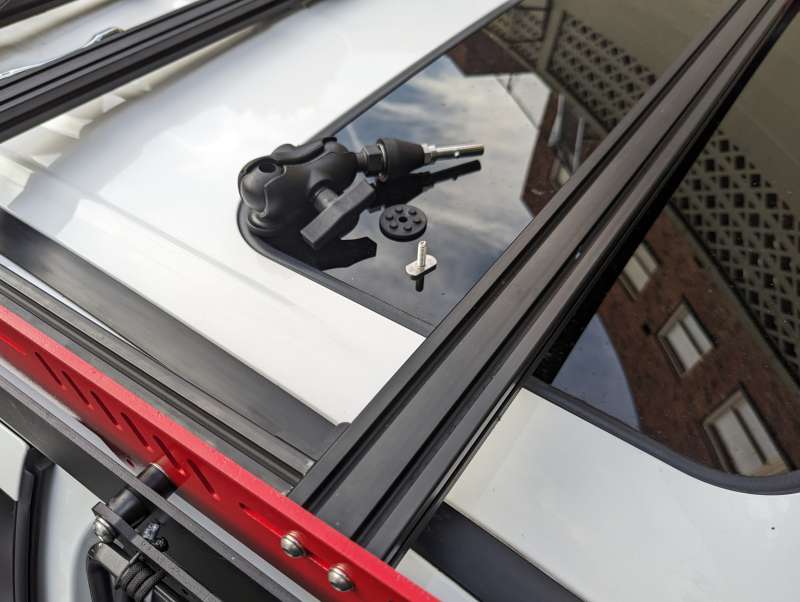
Once on the roof I had to find the best place for mounting keeping in mind that the exterior and interior antennas should be installed as far from one another as possible.
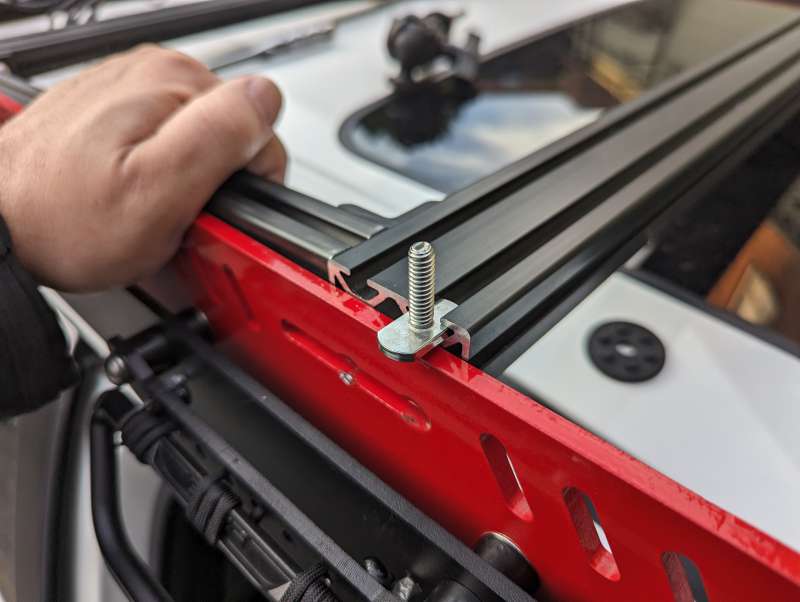
I partially removed one of my roof rails to drop in the T-Bolt. At first I was going to mount the antenna on the top rail so it would be fully vertical.
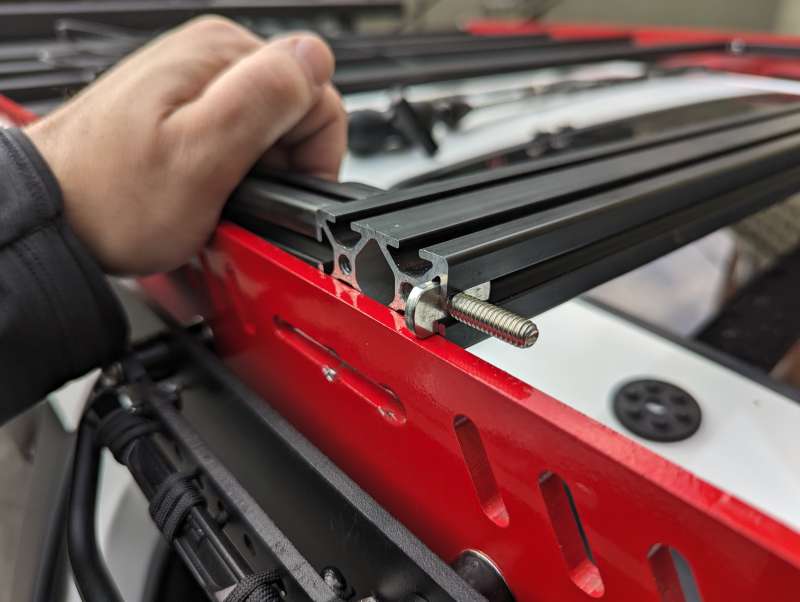
But then I realized that since the RAM mount is so versatile, I could insert the T-Bolt into the side track of the roof rail to keep the antenna folded down and protected when not in use.
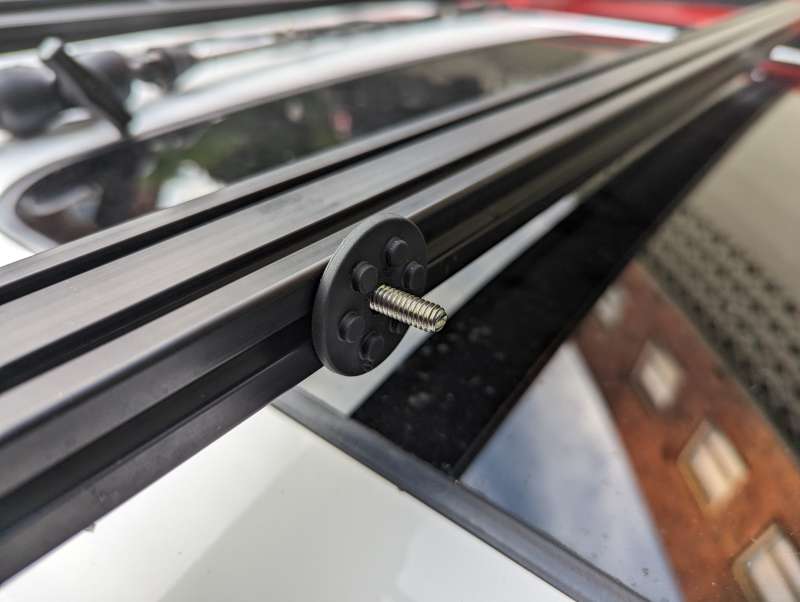
The unique RAM rubber lock washer installs over the T-Bolt, ensuring a secure fit when connected to the Track Ball.
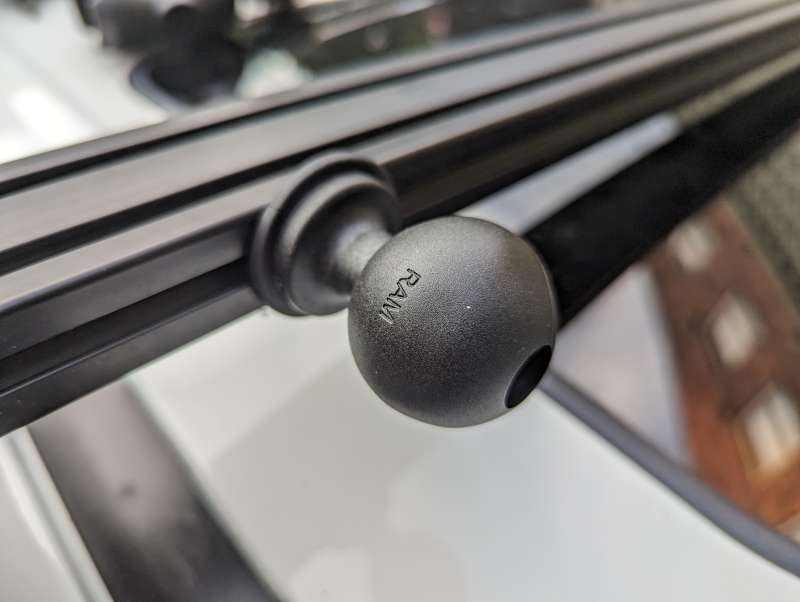
Once the Track Ball was installed, I reconnected the roof rail and made sure all the connections were tight.
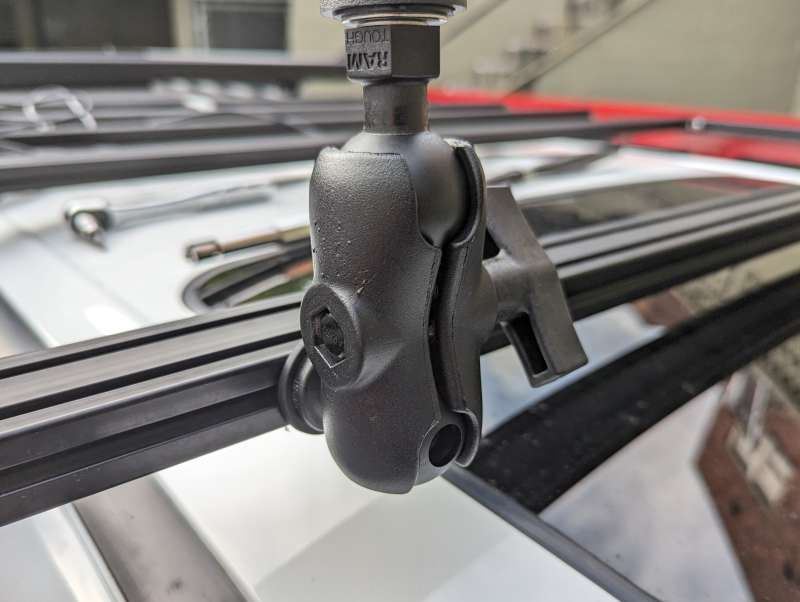
The RAM Double Socket Arm locks securely around both the Track Ball and antenna’s Tough Ball by tightening a large knob.
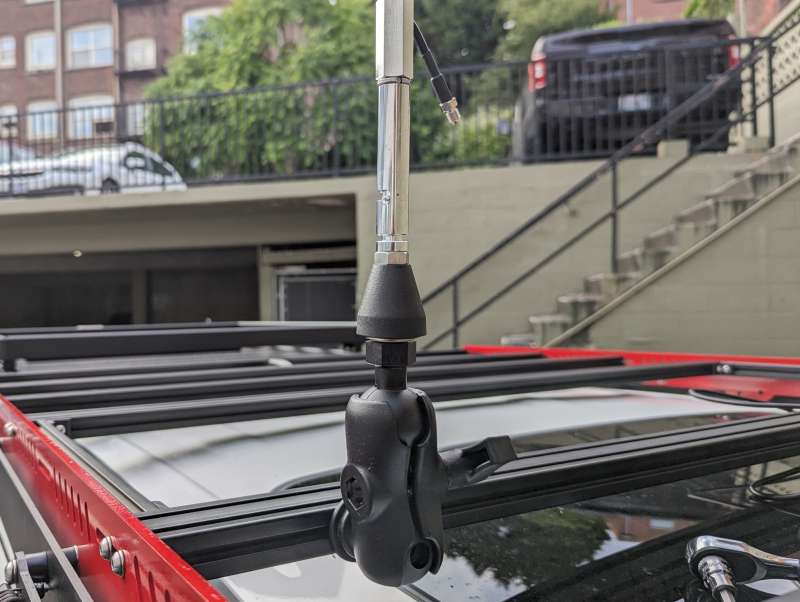
Having two ball mounts gives me a lot of options on how the antenna is deployed, it doesn’t have to just be kept vertical, although that position does provide the best reception.
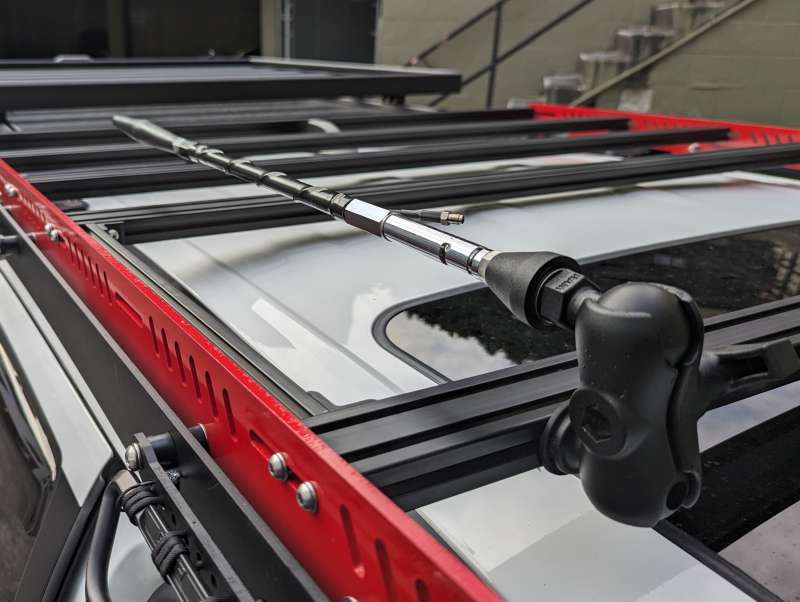
I can also run the antenna horizontally for a lower profile.
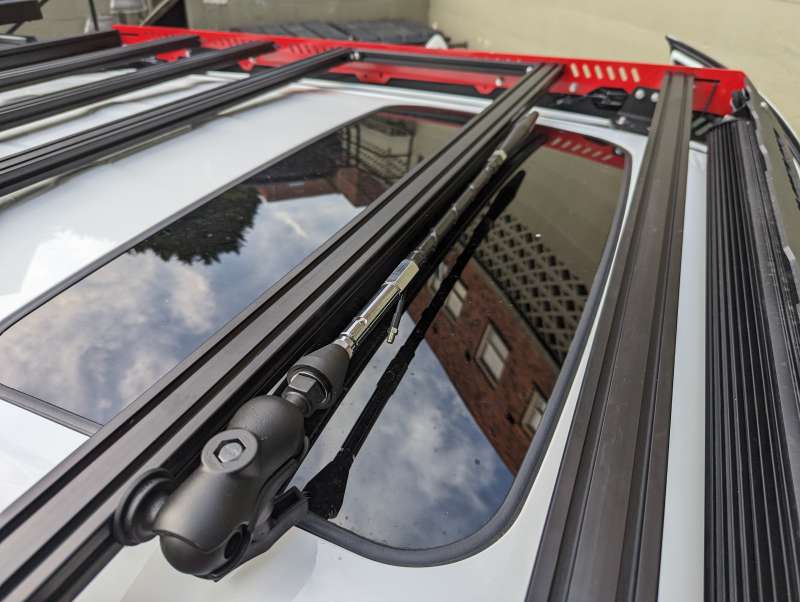
When I am not using the Bolton Velocity Off-Road Vehicle Cellular Signal Booster, I can secure the antenna to my roof rail, keeping it out of sight.
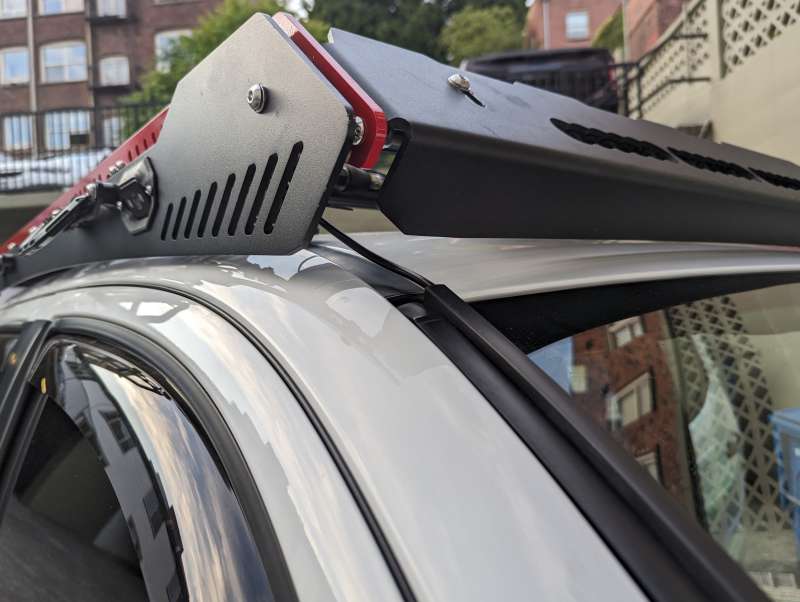
Now for the fun part, cable routing. I purchased a KC Hilites Universal Wire Hider, which allowed me to run the antenna cable down along my windshield and into my engine compartment without having to drill any holes in my roof.
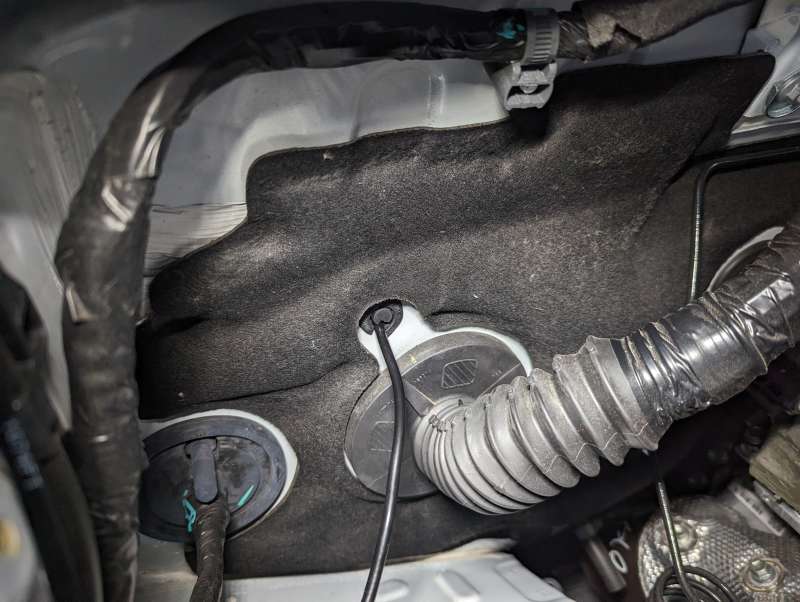
I found a good spot in the firewall to run the wire into the cab, using an existing rubber grommet and entrance point.
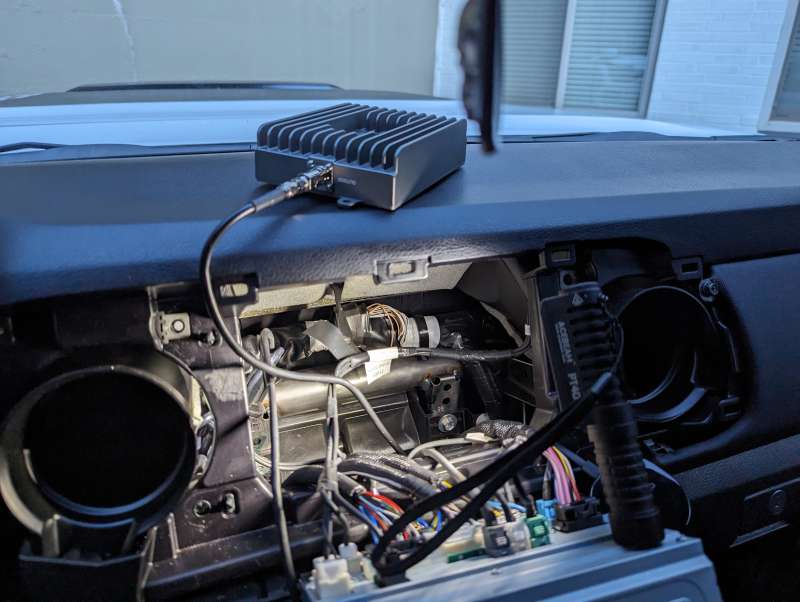
After a lot of wrangling around under my dashboard, I was able to locate the antenna wire, route it up behind my stereo, and connect it to the Velocity. I then started looking for the best location to mount the Velocity. Bolton advises mounting the unit under a seat or behind the dashboard as long as there’s room for ventilation. Since the space behind my stereo is practically cavernous, I lucked out.
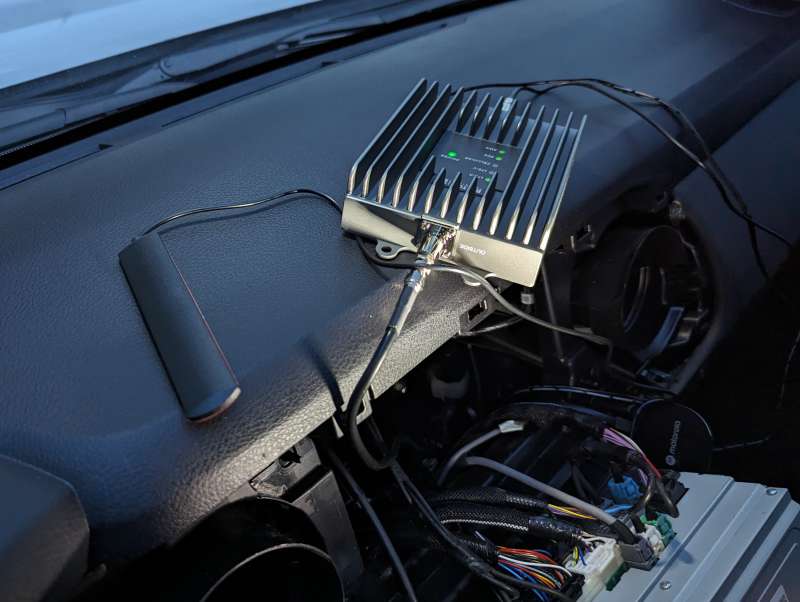
After connecting the power and making sure that I had all green lights I was ready to finish up. I just had to find a location for the inside flat antenna on the dashboard that was within two to three feet of the most common cell phone location, at least eight inches from cellular devices, and at least four inches from metal. I settled on placing it just above the stereo on my dashboard using the included 3M adhesive strip.
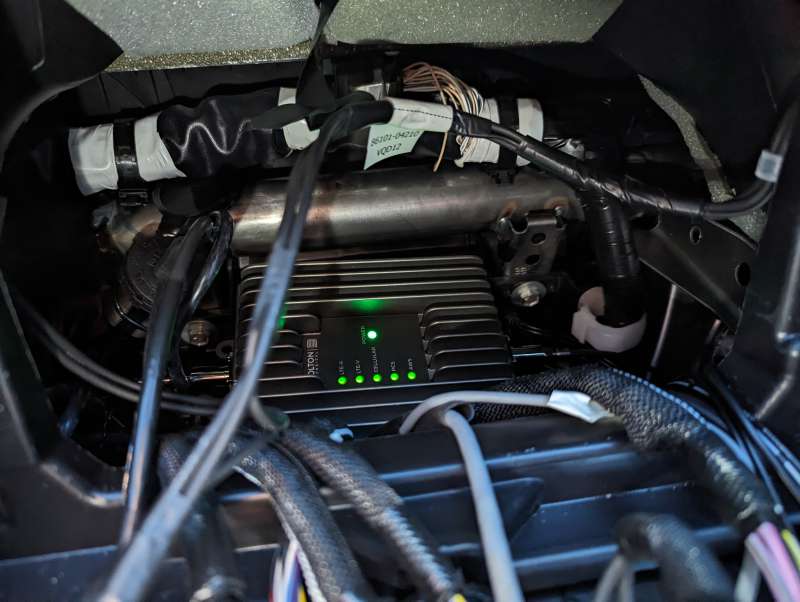
With the antenna mounted, the Velocity safely tucked away in my dash, and the interior antenna installed, I was finally ready to start testing.
Performance
Using the Network Cell Info app for Android, I was able to get decent before and after levels on my cell reception using the Bolton. The results were really impressive. The Velocity supports all North American cell carriers, including AT&T, Verizon, T-Mobile, US Cellular, and more. As a Google Fi user, I was happy to confirm that it worked with my carrier as well.
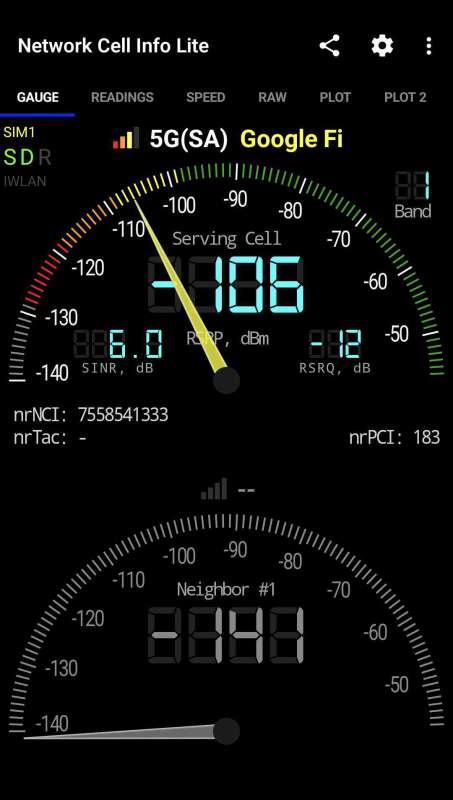
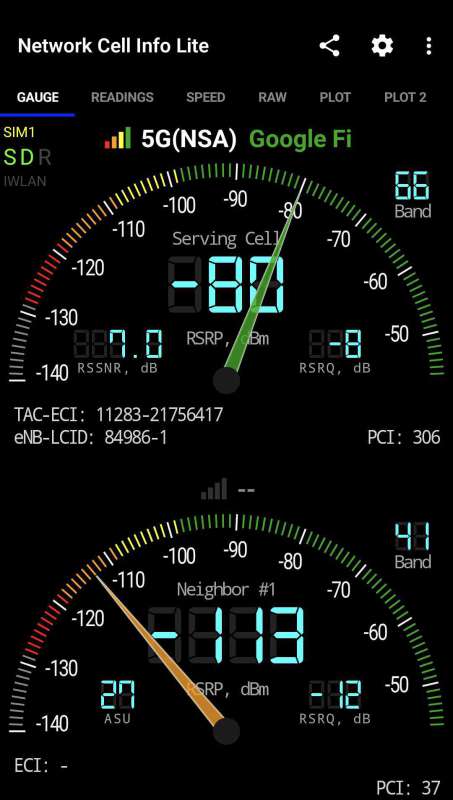
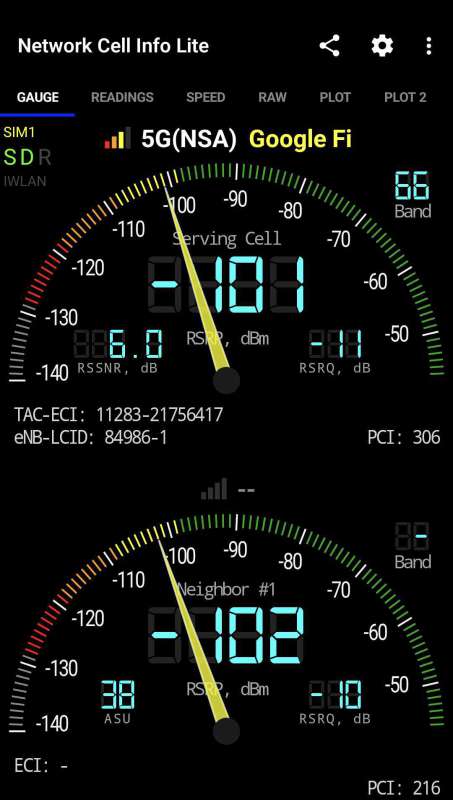
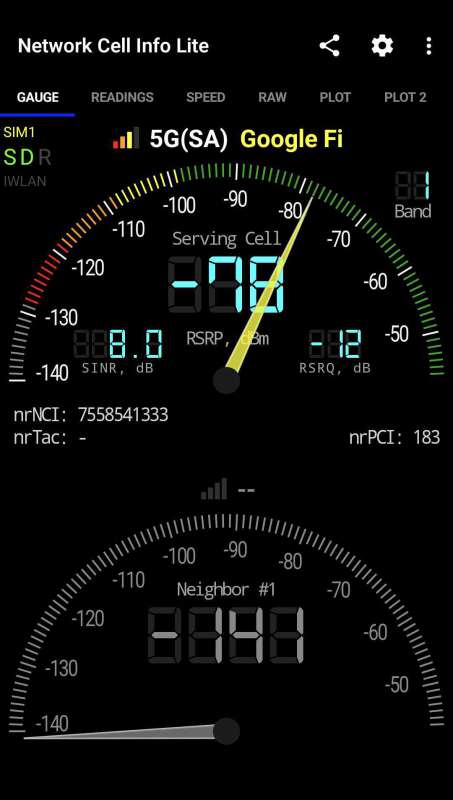
Overall, I am so glad that I installed the Bolton Velocity and I’m even happier that this kit was specifically designed for my use case. In most conditions, I’m consistently getting a massive boost in cell signal strength that pretty much blankets the entire cabin of my vehicle.
What I like
- Off-Road antenna and different mounting brackets offer great versatility
- Works right out of the box, boosting signal significantly
- Indicator lights work well for troubleshooting
What I’d change
- Would be nice if it had a companion app
- Requires very specific placement in vehicle
- Should come with a hardwiring kit as well
Final thoughts
The Bolton Velocity Off-Road Vehicle Cellular Signal Booster is a great addition to my Toyota Tacoma Overlanding setup. Being able to maintain a strong cell signal in remote areas comes in handy on every trip, and the Bolton consistently boosts my signal even when I barely have one bar showing. The off-road-specific antenna and bracket made choosing the Bolton a no-brainer and helped me avoid having to source other parts for a bespoke mounting solution. While I would prefer the Bolton to come with a partner app like some other similar cell boosters, I think that, for the price of $549.99, the Bolton delivers on its promise to keep me connected even when I’m far away from civilization.
Price: $549.99
Where to buy: Bolton Technical and Amazon
Source: The sample of this product was provided by Bolton Technical.


